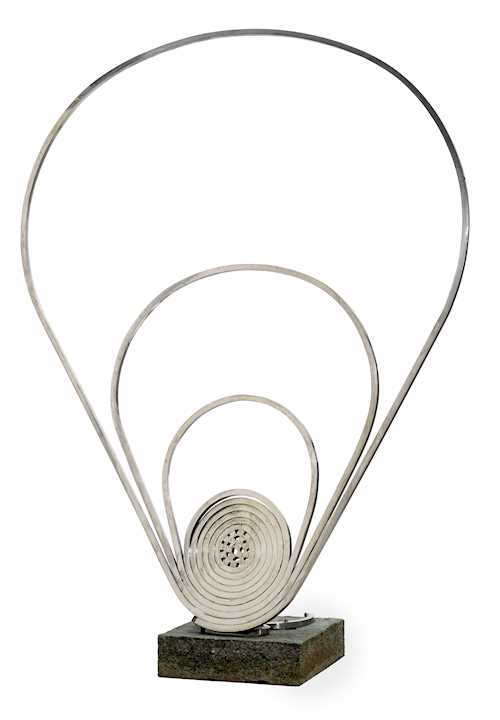CHIRINO, MARTÍN
* 1.3.1925 Las Palmas de Gran Canaria, † 11.3.2019 Madrid
Martín Chirino’s childhood and youth, during which he travelled the world with his father and learned ironworking at a young age, would hold the key to his later life. He was born in Las Palmas de Gran Canaria in 1925. As a teenager, Chirino spent much of his free time in the shipyard where his father worked. His father’s career enabled them to take numerous trips to the African coast together in these years, and his later artworks are marked by the impressions gathered during those voyages.At the age of 23 Chirino moved to Madrid, where he studied at the Royal Academy of Fine Arts in San Fernando and finally graduated as a professor in 1952. This was followed by trips to Paris, London and Italy, where he deepened his knowledge of the art of sculpture, studying great masters such as Henry Moore and Julio González. He then put this knowledge to practise in his workshop after his return to his native Canary Islands. Chirino also shared his passion for the Canarian natives and their writings with his good friend, the artist Manolo Millares. It is at this time that two subjects, iron as a material and African culture, merge in his work. The Black Queens series, made of materials such as wrought iron, wood, stone and lead, came into being.
In 1955, Chirino decided to move to Madrid together with other artists from the Canary Islands. He was allowed to use a blacksmith’s shop in the city of Cuenca, where he worked for a time, as a studio, and he created many works there. In 1958, he joined the Spanish artists’ group El Paso, which included artists such as Antonio Saura, Manolo Millares and Luis Feito. At the same time, Chirino opened his first solo exhibition at the Ateneo de Madrid, entitled ‘Los Hierros de Chirino’. In it, he continued to express his deep attachment to his homeland, but also to the material of iron. Another central element of his work is the spiral, which began in the 1960s in an exhibition at the New York Museum of Modern Art with the work ‘El Viento’.
Subsequently, his works were shown in numerous group and solo exhibitions in museums and galleries in the US and Europe. He decided to move to the New York area, where he lived until the end of the 1990s. His technique gradually evolved, as he began using entire steel plates welded together, which allowed him to create sculptures with more volume, as opposed to his previous focus on narrow, elongated forms.
Martín Chirino’s work was constantly shaped by new inspirations and influences from his travels and his encounters. Yet throughout all this time, he remained true to his origins, the Canary Islands. Not only did he found cultural institutions there, but also infuses many of his works with the image of his homeland and thus into the public space. Martín Chirino died in Madrid in 2019.
Werke aus unseren Auktionen
Quelques exemples d'œuvres de cet artiste
Vous trouverez ci-dessous quelques exemples d'œuvres de cet artiste provenant de nos ventes aux enchères passées et futures.
Nous acceptons à tout moment les consignations pour nos ventes aux enchères. Participez à notre succès - contactez-nous pour une estimation gratuite et confidentielle.
office@kollerauktionen.chMARTÍN CHIRINO
CHF 35 000 / 45 000 | (€ 36 080 / 46 390)
Vendu pour CHF 58 860 (frais inclus)
Aucune responsabilité n'est prise quant à l´exactitude de ces informations.
Détails Mon catalogue Questions

